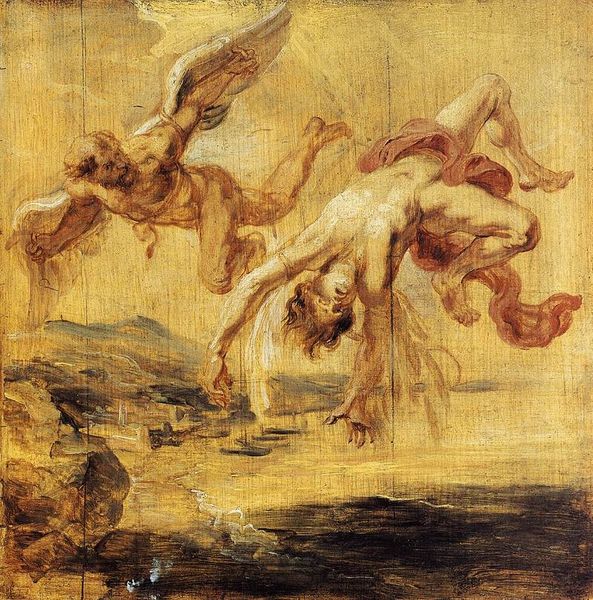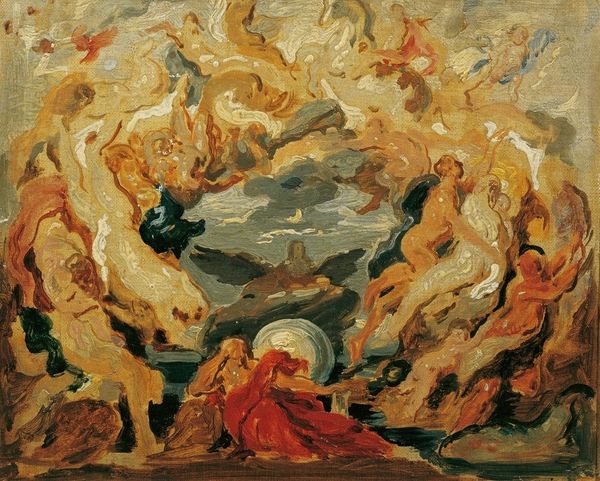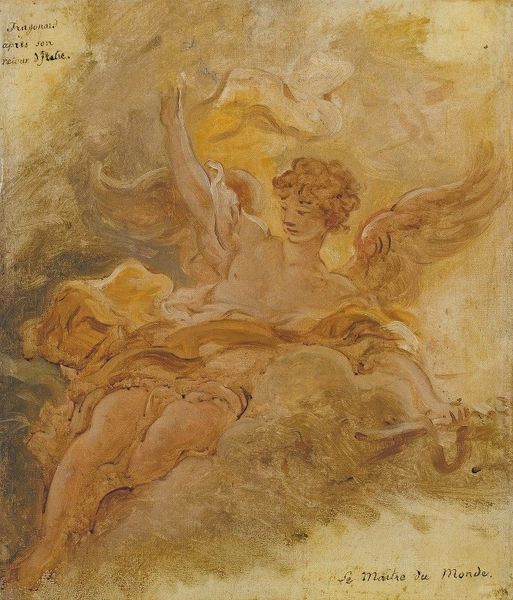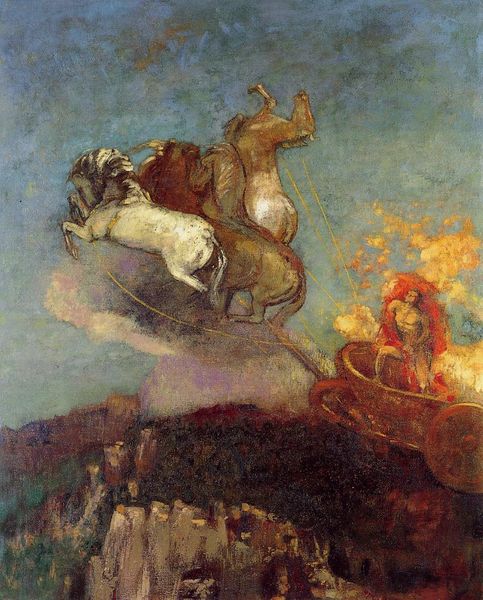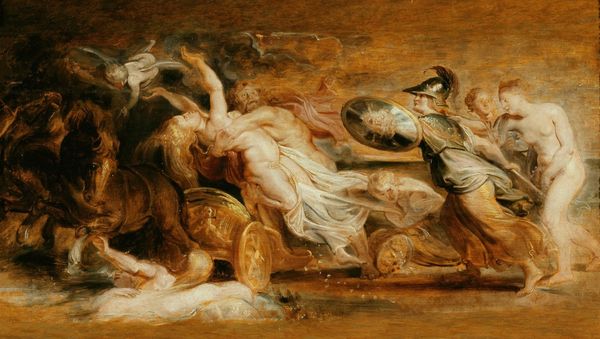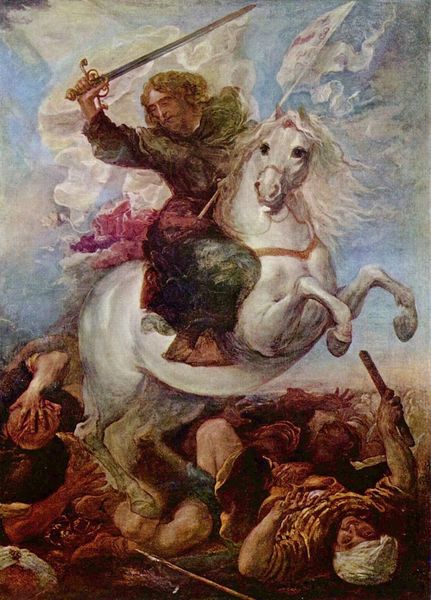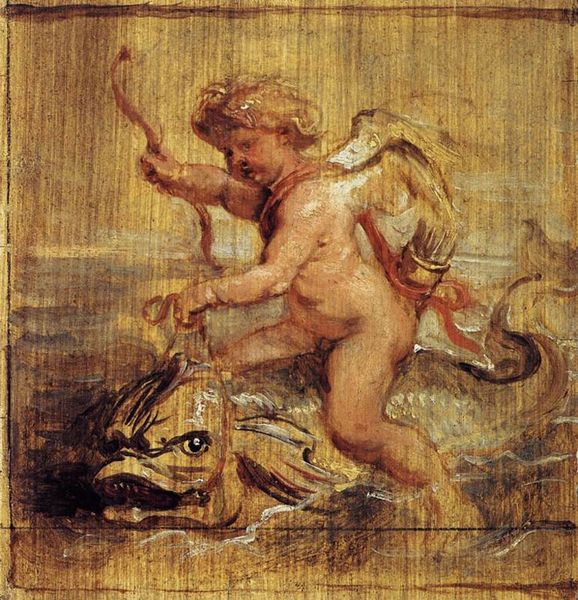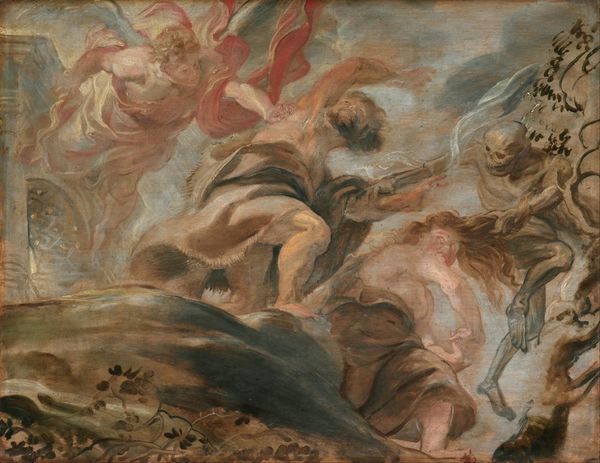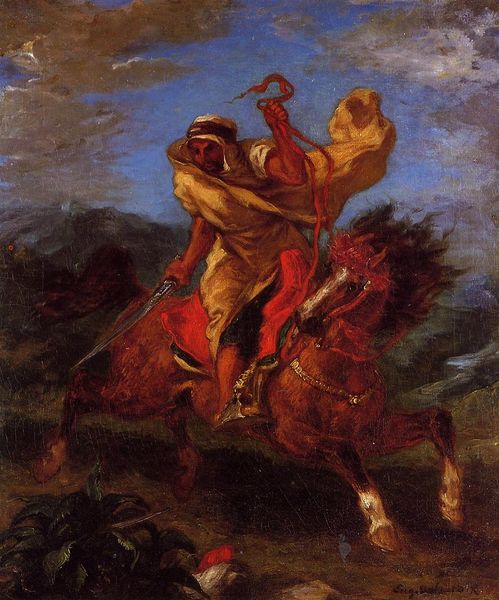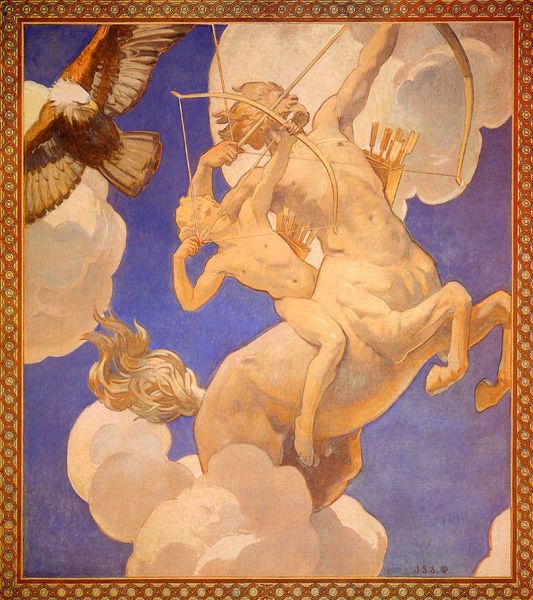
oil-paint
#
baroque
#
oil-paint
#
landscape
#
figuration
#
oil painting
#
mythology
#
history-painting
Dimensions: 27 x 27 cm
Copyright: Public domain
Curator: Let’s take a closer look at Peter Paul Rubens's "The Fall of Phaeton," painted around 1636. The dramatic use of oil on canvas certainly captures the intensity of the mythological moment. Editor: It hits you immediately, doesn’t it? It’s not just the chaotic swirl of bodies, but the diagonal composition itself makes you feel as though you’re falling with Phaeton. It’s quite disorienting, actually. Curator: Absolutely, the visual dynamic underscores Phaeton's legendary recklessness. According to the myth, he persuaded his father, the sun god Helios, to let him drive the chariot of the sun across the sky. He couldn't control the horses, leading to disaster. Notice the horses— they appear frenzied. Editor: And Rubens captures that brilliantly with their bulging eyes and flailing limbs. It’s pure Baroque excess in form. I find it fascinating how Rubens uses contrasting tones to sculpt their muscular forms, giving them an almost luminous quality against the darker sky. It draws your eye to them amidst all the chaos. Curator: Yes, and consider the larger symbolic implications here. The chariot spiraling out of control could be interpreted as humanity’s overreaching ambition and the inevitable consequences of hubris. The story of Phaeton resonates even now. Editor: Symbolically rich indeed, yet technically what arrests me are the glazes! Look at the warm undertones glowing through those layers of color, adding to that overall fiery atmosphere. The chariot looks solid and sculpted with such incredible detail. Curator: The entire canvas seems to writhe with motion, making it timelessly relevant. I find its story eternally compelling—a testament to Rubens’ masterful ability to weave narrative and visual drama so compellingly. Editor: Yes, one is inevitably left pondering themes of control and disaster. But ultimately, for me, this piece affirms that form carries as much meaning as subject in baroque painting. The story simply comes alive thanks to the energetic form it adopts.
Comments
No comments
Be the first to comment and join the conversation on the ultimate creative platform.
